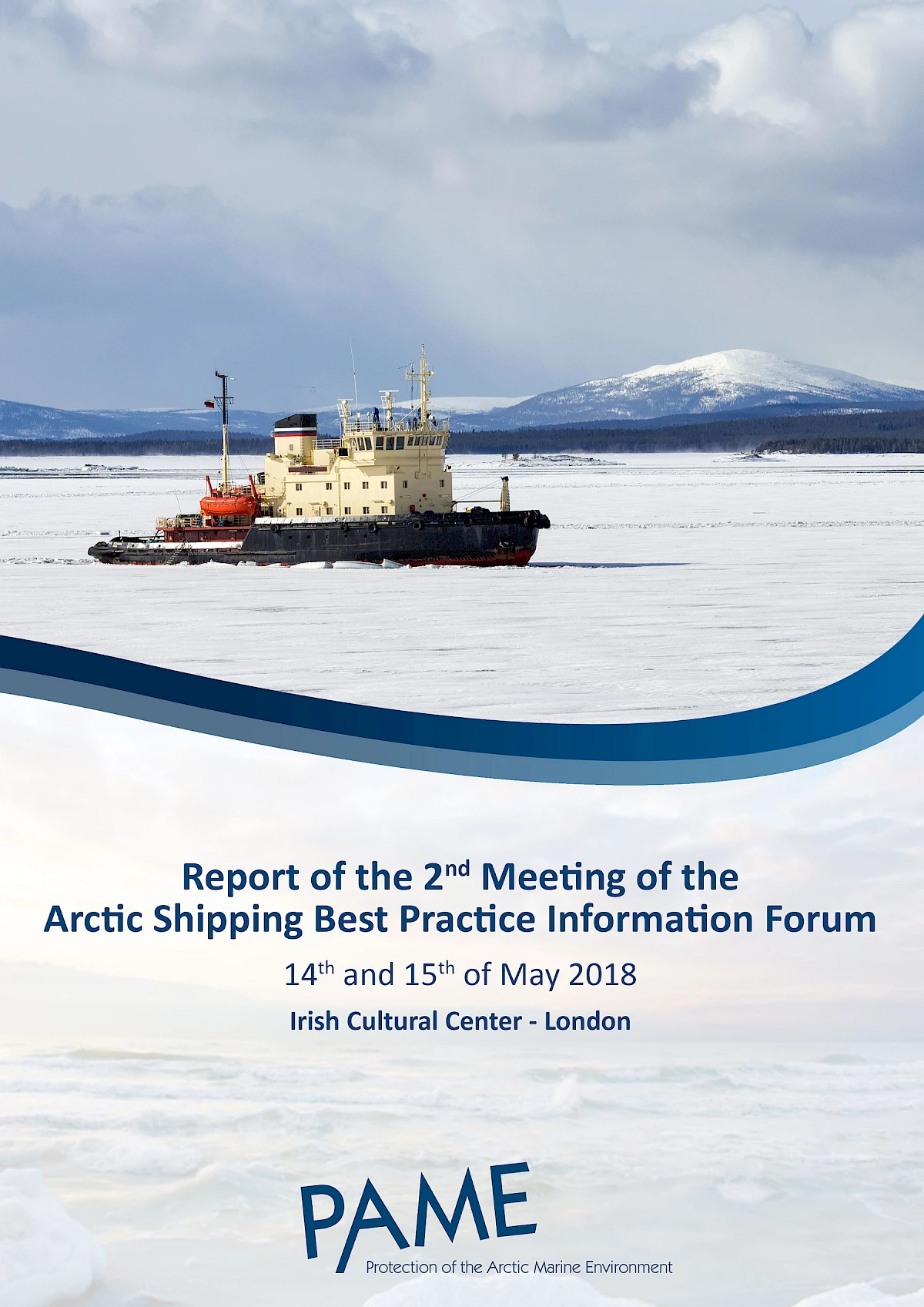Second meeting of the Forum
Location: Irish Cultural Center, London
Date: 14-15 May, 2018
Chair: Ms. Anita Makinen, Finland
Agenda: Download here.
Registrations: Download here
Meeting press release: See here.
Meeting summary report: Download here
Meeting Summary
The 2nd Meeting of the Arctic Shipping Best Practice Information Forum (the Forum) commenced with opening remarks by distinguished delegates, including the Forum’s Chair, who emphasized the utility of the newly launched web portal as a tool for the effective implementation of the Polar Code. Specifically, Polar Ship Certificates (PSC), Polar Waters Operations Manuals (PWOM), and Operational Assessments, were identified as three key components of the Polar Code that would benefit from the authoritative and reliable information available via the web portal.
Representatives of the Forums’ Organizing Committee jointly presented on the web portal (www.arcticshippingforum.is), navigating the audience through its layout (organized according to the individual chapters of the Polar Code) and hyperlinks received to date. The presenters noted that the web portal is designed to be iterative, and that both layout and substance will be continually supplemented and refined based on feedback received. At the time of launch, the web portal contained hyperlinks to over 120 sources of Polar Code relevant information.
Over the course of the day-and-a-half meeting, presentations focused on the unique experiences gained by Arctic States, shipowners, classification societies and intergovernmental organizations in implementing, complying with and/or making information available to support implementation of or compliance with the Polar Code. More specifically, for those involved with implementing or complying with the Polar Code, presentations highlighted the specific type of information needed to apply for or issue a PSC, including information to prepare or review the required Operational Assessment and PWOM.
For example, presentations by the Kingdom of Denmark and the Russian Federation touched upon some of the challenges facing Flag and Arctic Coastal States in implementing the Polar Code, and identified certain additional domestic measures established around Greenland and along the Northern Sea Route to address Arctic shipping safety and pollution prevention.
Presentations from DNV-GL and Lloyd’s Register also highlighted some of the shared challenges encountered by classification societies regarding Polar Code implementation, therefore underscoring the need for unified interpretations wherever possible. Challenges encountered thus far include, inter alia, how to conduct operational assessments, how to model a PWOM, and how to set requirements that meet the minimum five-day rescue time provision.
Wherever possible, presentations touched upon the sources of information used, why those particular sources were deemed adequate, and any challenges encountered in locating or reviewing relevant or required information. Presentations also described the types of information that - if made more readily accessible - would facilitate preparation of an application for or review and approval of a PSC or PWOM.
From the perspective of a shipping company and industry association with operations in the Arctic, both Fednav and the Cruise Lines International Association (CLIA) noted that while significant amounts of information already exist to support the harmonized implementation of the Polar Code, the more pressing issue is identifying the right information, and to this end the web portal is considered a positive step. This notwithstanding, a related panel discussion revealed that better information on sea ice break-up/freeze-up patterns, as well as how to more accurately determine ice thickness is needed.
Presentations by organizations that generate or make available information necessary for implementing or complying with the Polar Code focused on identifying that information, explaining how it is collected and/or generated, and describing any challenges encountered in making it widely available to those who need it. These presentations also identified challenges in obtaining desired information, thereby highlighting knowledge gaps.
For example, the International Ice Charting Working Group (IICWG) noted the connectivity challenges associated with distributing ice information to mariners operating in the Polar Regions, as well as the difficulties determining ice thickness using satellite imagery. The World Meteorological Organization (WMO) echoed similar challenges with communicating information at high latitudes, noting the WMO’s ongoing work into the development of long term Arctic weather prediction systems, and indicated the benefits of obtaining weather and ice observations from ships operating in Polar Regions (e.g. ice thickness, sea ice pressures, etc.) as a means of improving data accuracy.
The Arctic Regional Hydrographic Organization (ARHC) reiterated the importance of access to timely and high-quality date for purposes of vessels safety and pollution prevention in the Arctic, and much like the presentations made by other international organizations, the ARHC’s presentation highlighted how the information the ARHC produces supports the Polar Code – in its case Chapter 9 (Safety of Navigation) and Chapter 11 (Voyage Planning).
PRESENTATIONS
- ARHC (Birte Noer Borrevik)
- CLIA (Kierstin M. Del Valle)
- The Kingdom of Denmark (Per Sönderstrup - Danish Maritime Authority)
- DNV GL (Morten Mejlænder-Larsen)
- Fednav (Tim Keane)
- IICWG (Marianne Thyrring)
- Lloyds Register (Alicia Nash)
- Nautical Institute (John Lloyd)
- The Russian Federation (Vladimir Kuzmin - Administration of Baltic Sea Ports)
- WMO (Etienne Charpentier)
- Web-Portal presentation (Hjalti Hreinsson and Michael Kingston)
- Remarks by Adrien O'Neill, Ambassador of Ireland to the UK
 Arctic Council Working Group
Arctic Council Working Group 